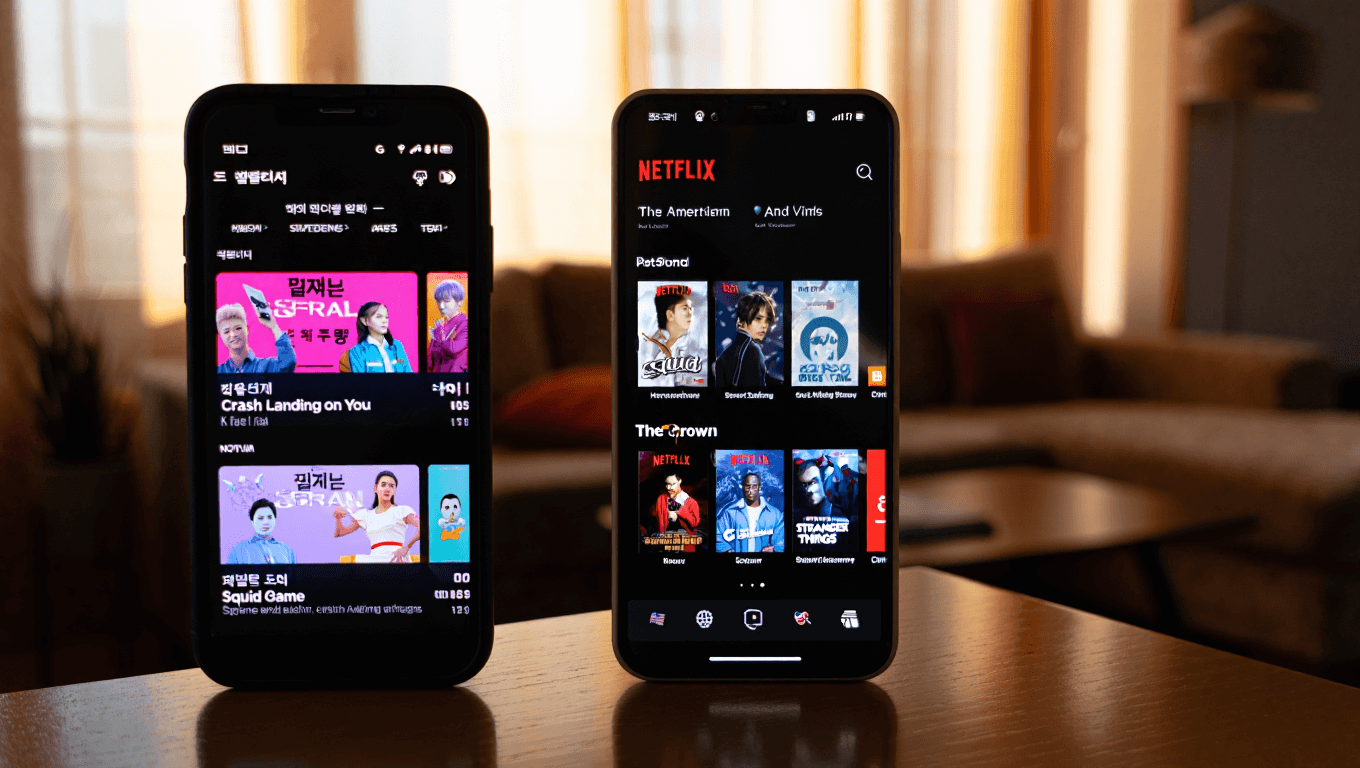Netflix Korea has 200+ exclusive shows that don’t stream in the US. The streaming giant knows it. You’re missing out. Licensing agreements create a massive gap between regional libraries. This is why your Korean content catalog feels limited.
🔥 Quick Facts:
- 200+ Korean shows available only in South Korea’s Netflix.
- US Netflix has 5,879 titles total versus Netflix Korea’s significantly larger catalog.
- Licensing restrictions prevent distribution outside specific regions.
- Korean content ranks #2 globally on Netflix for viewership after US content.
- Copyright laws differ by country, forcing separate negotiations per region.
What’s Really Happening Behind the Scenes
Netflix doesn’t own most content it streams. Third-party studios do. Those studios sell licenses regionally, not globally. South Korea gets preferential treatment. Korean broadcasting networks negotiate exclusive domestic rights.
This isn’t Netflix being difficult. It’s contract law. Copyright holders earn more money by restricting content to specific territories. They license Korean dramas to Netflix USA in limited quantities. But they license heavily to Netflix Korea.
“Netflix doesn’t own all the shows/movies they stream, so they are not permitted to stream them in countries they don’t have the license for.”
The Numbers: How Netflix Libraries Actually Compare
US Netflix remains the largest English-language library globally. But raw numbers hide regional power imbalances. South Korean content represents 8-9% of Netflix global viewing hours now. That’s second only to US content.
Here’s the breakdown of top Netflix libraries worldwide:
| Country | Total Titles | Specialty |
| United States | 5,879 | English-language dominance |
| Iceland | 9,700+ | Most extensive globally |
| South Korea | Undisclosed | Largest Korean content hub |
| Slovakia | 7,436 | Diverse international mix |
Netflix Korea has been optimized for local audiences. Content licensing is cheaper there. Studios want Korean audiences watching Korean stories. Win-win.
Why You Can’t Just Watch Everything
Streaming rights work like this: A Korean production company makes a hit show. They own it. Netflix wants to stream it everywhere. But local broadcasters own territorial rights. They charge different prices regionally.
In South Korea, domestic networks hold leverage. They own the production companies. They set high prices for international rights. So Netflix pays more to distribute internationally than domestically.
- Territorial licensing limits content to specific geographic regions.
- Exclusive agreements give some platforms first rights in specific countries.
- Broadcast windows require Netflix to wait before acquiring streaming rights.
- Language dubbing and subtitle costs vary dramatically by region.
- Cultural regulations differ between nations, preventing universal releases.
What Korean Shows Are Actually Worth Finding?
Here’s what makes this frustrating: Korean content dominates global Netflix viewing. Americans love K-dramas. Squid Game shattered records. Crash Landing on You became a phenomenon.
Yet hundreds of quality Korean shows never reach US screens. They’re licensing failures, not quality issues. Korean television produces consistently excellent content. Regional restrictions mean you’re seeing maybe 40% of what exists.
Top platforms like Wavve and Watcha each offer over 4,000 titles in Korea. That’s dramatically more than US availability. Tving offers another 4,000+ titles. Korea has three competing streaming services with massive libraries.
Want Korean shows? KOCOWA offers exclusive Korean broadcasting content. Rakuten Viki specializes in K-dramas. Tubi has extensive Korean content free with ads.
Could This Change Anytime Soon?
Industry experts don’t expect dramatic shifts. Licensing deals lock content for years. New negotiations take time. Netflix spent billions acquiring Korean production rights recently though.
The streamer now produces original Korean content at scale. Cashero arrives late 2025. The Price of Confession launches in December 2025. The Great Flood debuts December 2025 too.
Netflix is investing heavily in Korean originals specifically. These bypass traditional licensing issues. They own them outright. Global distribution becomes standard. Expect more Korean originals hitting US screens consistently.
Still, the 200+ show gap will likely persist. Regional markets will remain. That’s the streaming reality for now.
Sources
- Netflix – K-Dramas and international content library data
- Statista – Netflix library size by country analysis
- Korea.net – Korean content global viewership rankings November 2025

Daniel Harris is a specialist journalist focused on the crossroads of breaking news, extraordinary history, and enduring legends. With a background in historical research and storytelling, he blends timely reporting with timeless narratives, making complex events and ancient myths resonate with today’s readers. Daniel’s work often uncovers surprising links between present-day headlines and legendary tales, offering unique perspectives that captivate diverse audiences. Beyond reporting, he is passionate about preserving oral traditions and exploring how extraordinary stories continue to shape culture and identity.

